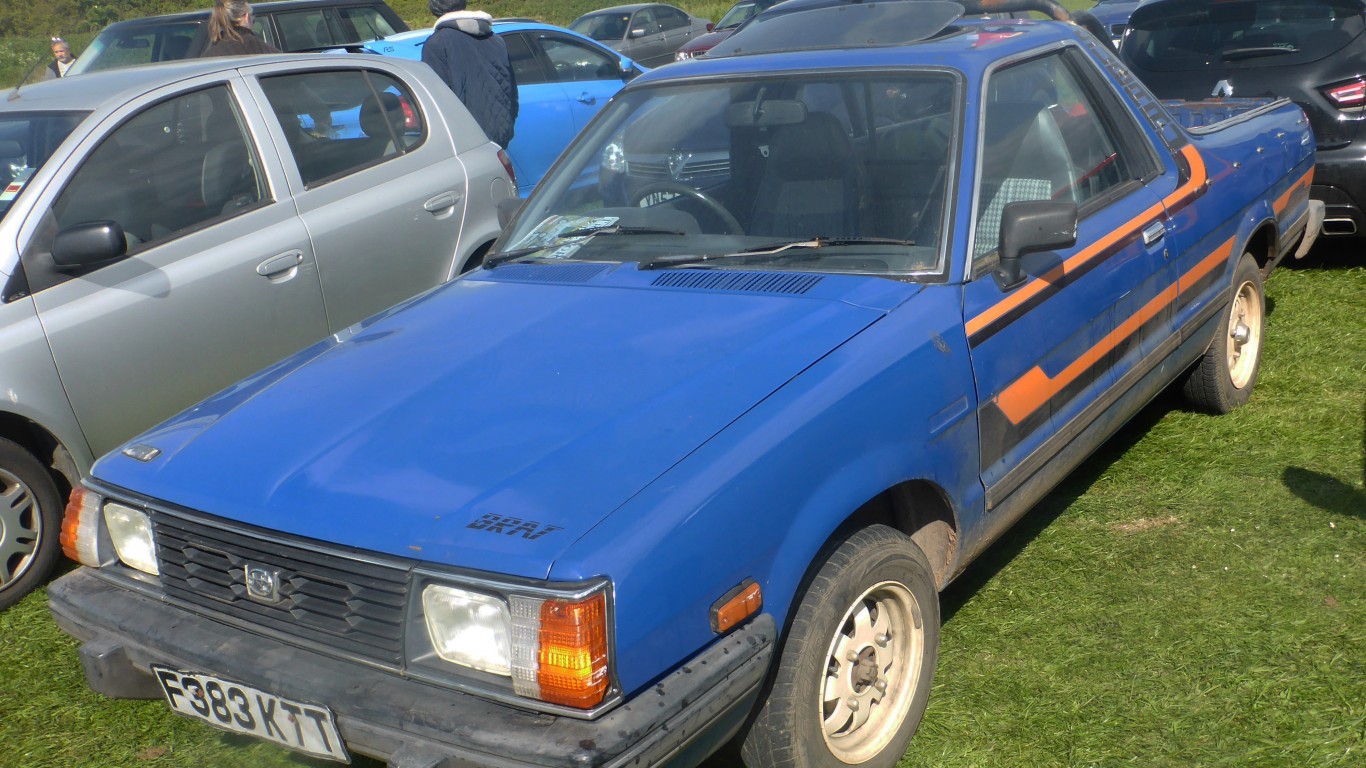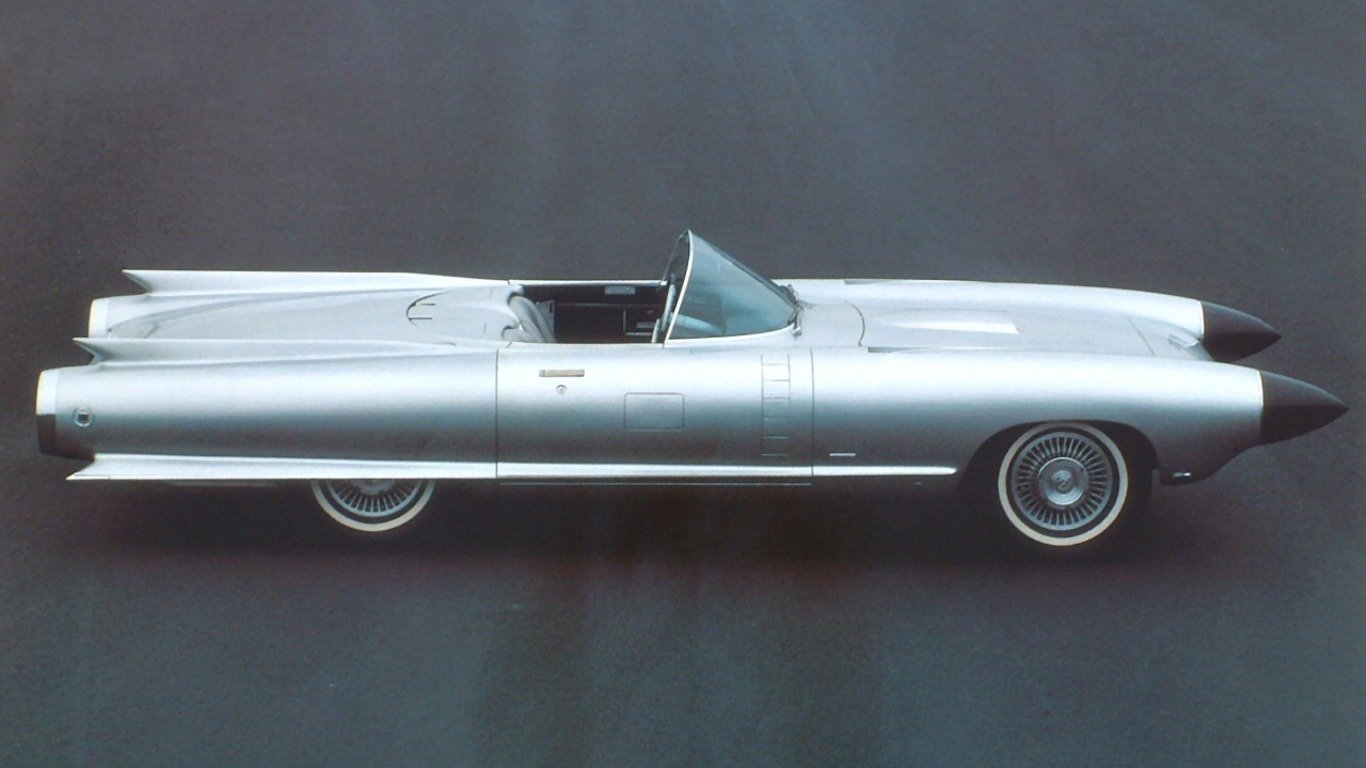

Management consultant guru Peter F. Drucker once said, “If you want something new, you have to stop doing something old.” Since the dawn of the automobile in the early 20th century, automotive designers have endeavored to do just that. They’ve used the automobile as a canvas to realize their most creative imaginings, accommodate the needs of the public, or address the environmental concerns of society.
Not all of their creations resonate with the public. Some of the designs that might have seemed brilliant in concept became some of the automobile industry’s oddest creations in reality. Here are history’s strangest car designs.
With the new year comes the lineup of major auto shows, including the Chicago Auto Show, one of the nation’s oldest, which takes place in February. As the car world gears up for the next big thing, 24/7 Wall St. has taken this opportunity to compile a list of history’s weirdest-looking cars.
Artistic movements like Art Deco played a role in the curvy shape of the vehicles like the Norman Timbs Special, as did rocket imagery in the 1950s on Chrysler’s (Ghia) Streamline X “Gilda.” Designers also responded to the needs of urban life and the environment by making ever-smaller and odder cars, some with just three wheels. Some small cars such as the Mini Cooper found lasting fame as four-wheel stars in movies. These are the most iconic cars in film.
To be included in our list, we focused mostly, though not exclusively, on vehicles that could be purchased by the general public. We also included some concept cars as well as cars in limited production.
Click here to see history weirdest-looking cars
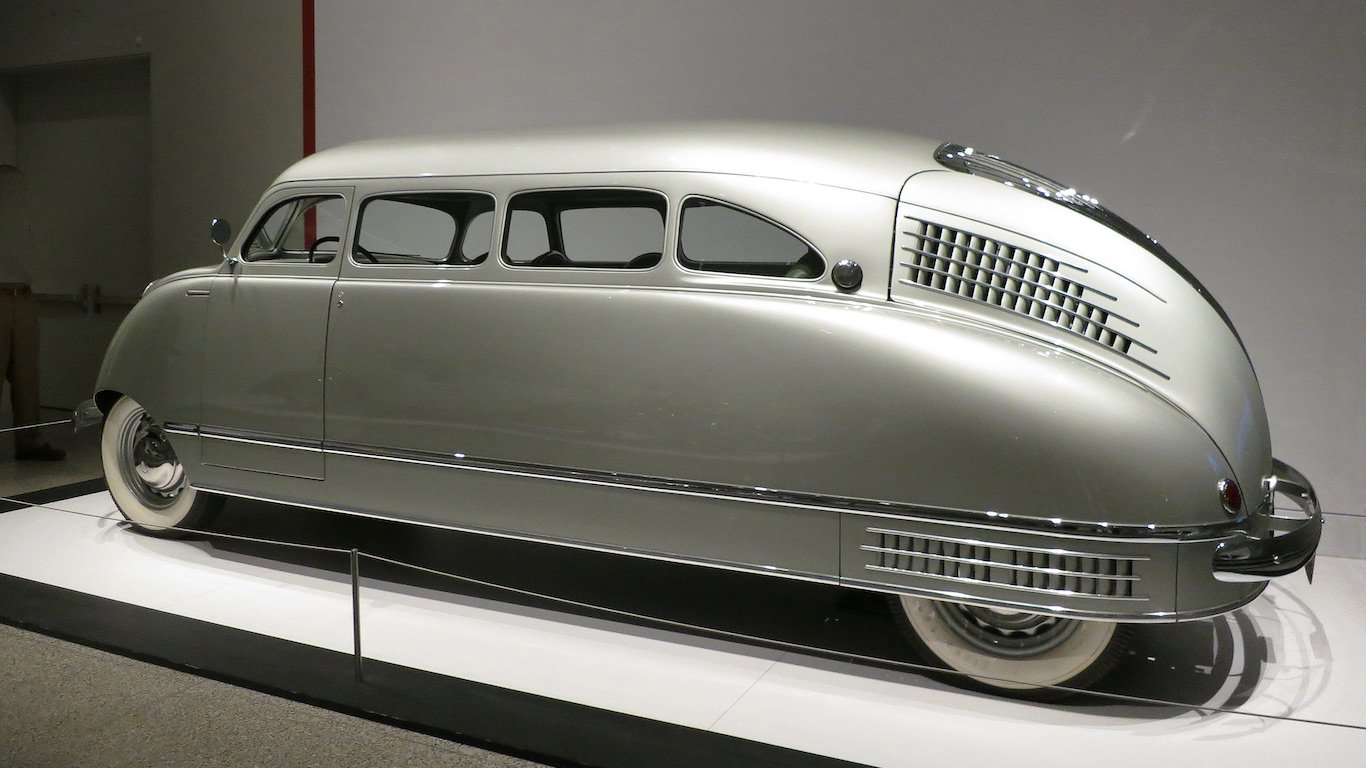
1. Stout Scarab
> Year introduced: 1935
> Manufacturer: Stout Motor Car Company
The beetle-shaped vehicle owed its form to aircraft designer William Bushnell Stout. American cars were getting bigger and sturdier by the 1930s, and for those who could afford to hit the road during the Great Depression, this early minivan with a long wheelbase might have seemed ideal. The car featured ambient lighting, heating controlled by a thermostat, and power door locks. Stout logged 250,000 miles in this egg-shaped vehicle, which had a price tag of $5,000. We’ll never know if it would have resonated with the public because it never went into mass production.
[in-text-ad]
2. Thunderbolt
> Year introduced: 1940
> Manufacturer: Chrysler
The car’s shape owed much to supercharged locomotives crisscrossing the nation in the late 1930s. The Thunderbolt was one of the first cars to have power windows. There is no grill, with the air intake underneath the bumper. Other features included a retractable steel roof, among the first cars in America to have this, and headlights that popped open with the push of a button.
3. Norman Timbs Special
> Year introduced: 1948
> Manufacturer: Norman Timbs
The sleek vehicle with the forward-thrusting cockpit was the brainchild of Norman Timbs, a racing engineer. Timbs, who would eventually work for the visionary car maker Preston Tucker, created a vehicle with an undulating yet elegant shape. The chassis was constructed with aircraft tubing material and the body was made of aluminum.
4. Tasco
> Year introduced: 1948
> Manufacturer: The American Sportscar Company
Tasco derived its name from The American Sportscar Company and its design suggested a car looking to sprout its wings. That’s not surprising with the age of rockets just beginning and “right-stuff” pilot Chuck Yeager breaking the sound barrier in 1947. Noted automobile designer Gordon Buehrig, who worked at Packard, General Motors and Stutz, crafted the vehicle whose layout was inspired by airplane controls. There were other airplane nods as well, such as an enclosed cockpit. Driver and passengers could raise glass panels above them. All four wheels were entirely enclosed.
[in-text-ad-2]
5. (Ghia) Streamline X “Gilda”
> Year introduced: 1955
> Manufacturer: Chrysler
With the space age about to dawn, Chrysler produced the spaceship-inspired concept car (Ghia) Streamline X “Gilda.” The turbine-powered car debuted at the Turin Auto Show in 1955. The vehicle’s creators were hoping to achieve greater aerodynamics with this futuristic passenger car. The styling of the car was by Italian designer Giovanni Savonuzzi. Virgil Exner, Chrysler’s design head man commissioned the project. The Gilda had a sleek aluminum body sitting atop a square-tube chassis.
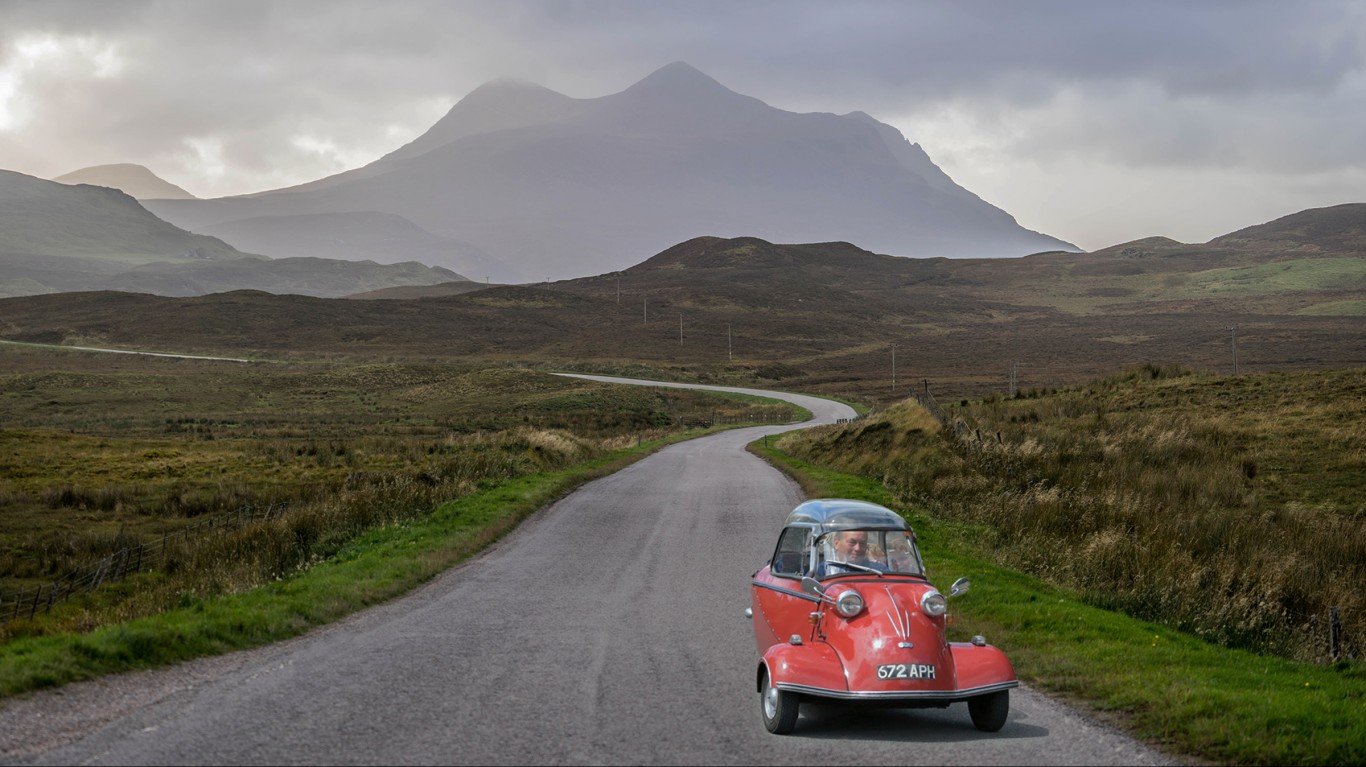
6. KR200
> Year introduced: 1956
> Manufacturer: Messerschmitt
The Messerschmitt company, famous for building fearsome fighter planes in World War II, developed the KR200, or Kabinenroller, and produced 12,000 of the bubble cars in its first year. This eccentric-looking vehicle that slightly suggested a Volkswagen had three wheels and weighed just 500 pounds. The single-door car with a bubble enclosure could only seat one person comfortably. All the controls of the car were by push button and not by turning.
[in-text-ad]
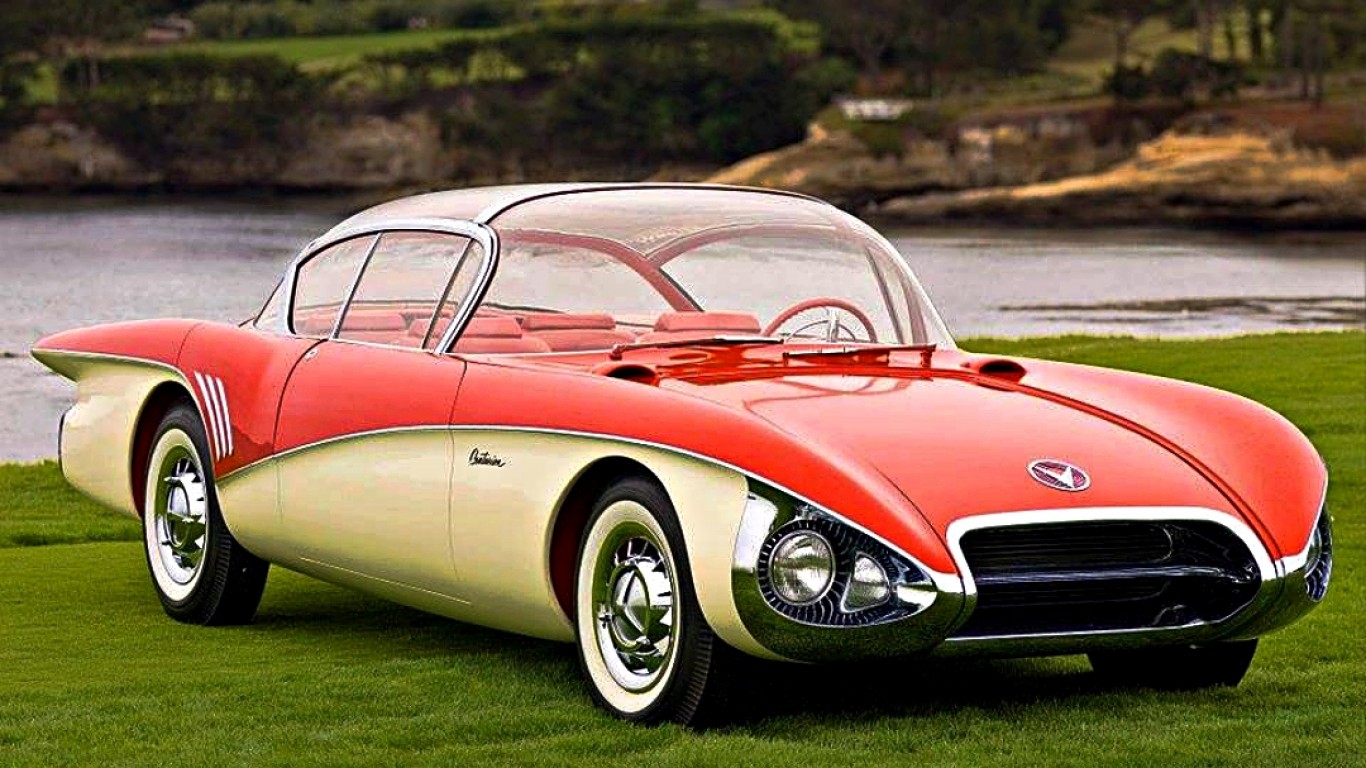
7. Centurion
> Year introduced: 1956
> Manufacturer: Buick
Like something out of the old sitcom “Happy Days,” few cars say the 1950s more than the Centurion. The bubble top, again influenced by the aircraft industry, overlaid a fiberglass body that included leather seats. And what 1950s car would be complete without tail fins. Only one of the vehicles still exists, at a museum in Michigan.

8. Isetta
> Year introduced: 1956
> Manufacturer: BMW
The Isetta from BMW was another “bubble car” from the 1950s. When the three-wheeled vehicle first debuted, it was powered by a small 9.5 horsepower engine. The manufacturers later added a fourth wheel in back to keep it from tipping over. Getting into the car was a challenge. There were no side doors, so passengers entered by opening the door at the front of the vehicle. Once inside, passengers sat on a bench. The car got very good gas mileage and travelers could put larger luggage on an outside rack for longer trips.
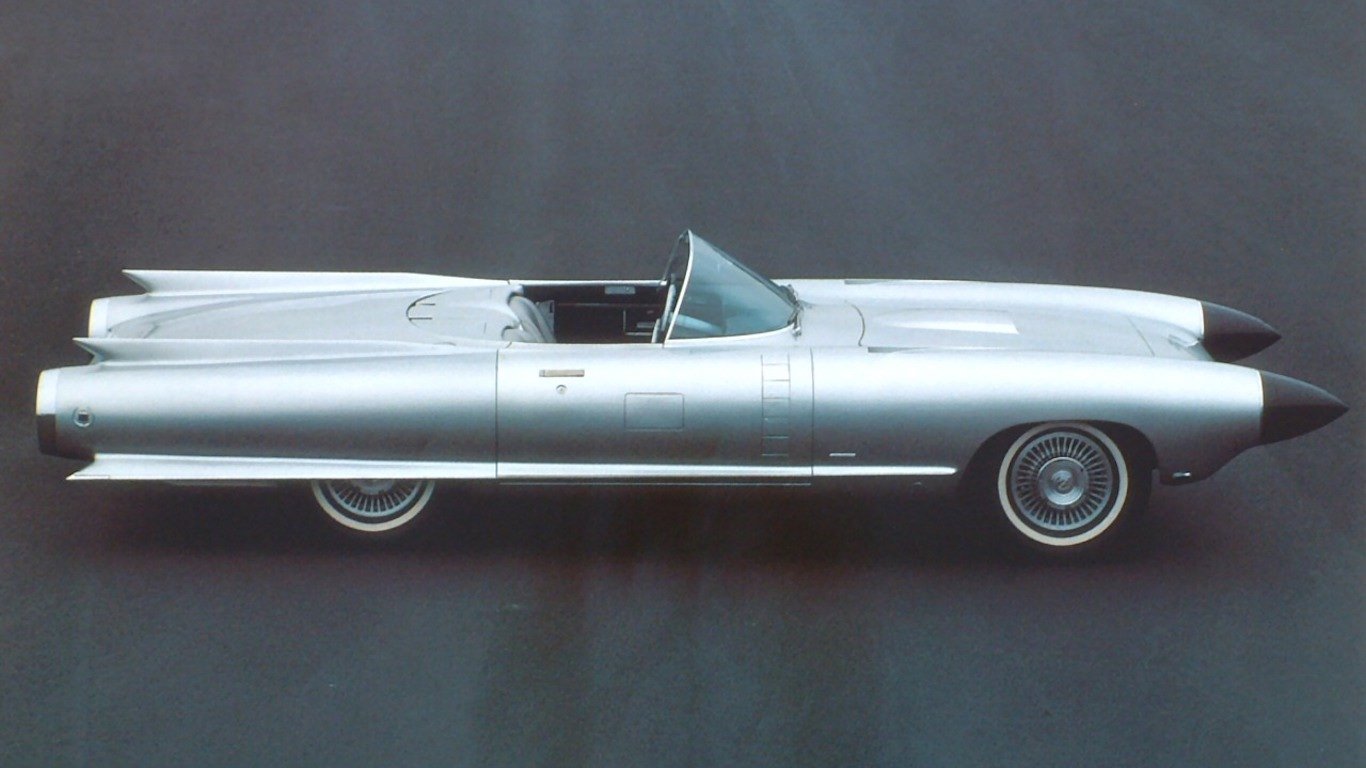
9. Cyclone
> Year introduced: 1959
> Manufacturer: Cadillac
The Cyclone, a concept car made by Cadillac, certainly looked the part when it debuted in the late 1950s. The rocket-inspired vehicle, with two black cones where the headlights are usually located, was designed by concept-car guru Harley Earl and looked like something Flash Gordon would drive. It had a bubble canopy that was made of Plexiglas. The car also had a radar system warning the driver of objects ahead. The doors slid to the slide like today’s minivan doors.
[in-text-ad-2]
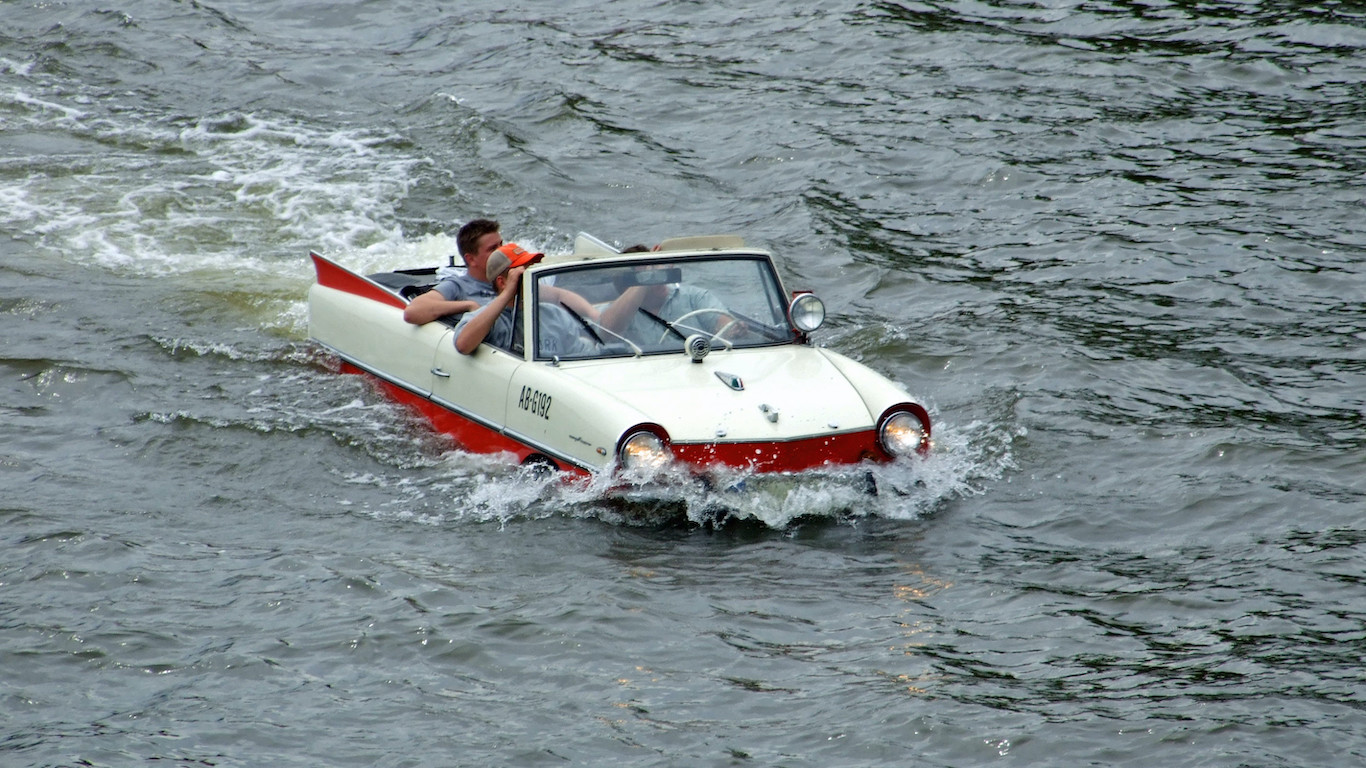
10. Amphicar
> Year introduced: 1961
> Manufacturer: Amphicar Corporation
Aficionados of James Bond films will recall the Lotus Esprit that converted into a submarine in the 1977 movie “The Spy Who Loved Me.” Not as stylish or luxurious was the Amphicar, a creation of German engineer Hans Tippel, who had been working on the concept since the early 1930s. Once the car transitioned to water, it had two propellers that could reach up to seven knots. Its front tires acted as rudders. It had a high price tag, nevertheless, about 4,000 of them were sold, and among the owners was President Lyndon Johnson.
11. Peel P50
> Year introduced: 1962
> Manufacturer: Peel Engineering Company
At 4.5-feet long, no one is going to mistake the British-made Peel P50 for a muscle car. The three-wheeled vehicle once held the distinction as the smallest car ever produced, according to the Guinness Book of World Records. Just 50 of them were manufactured and those that are still tooling about appear on British television shows as something of a novelty item. The car has one headlight in the middle, one windshield wiper, and one door. And it seats one.
[in-text-ad]
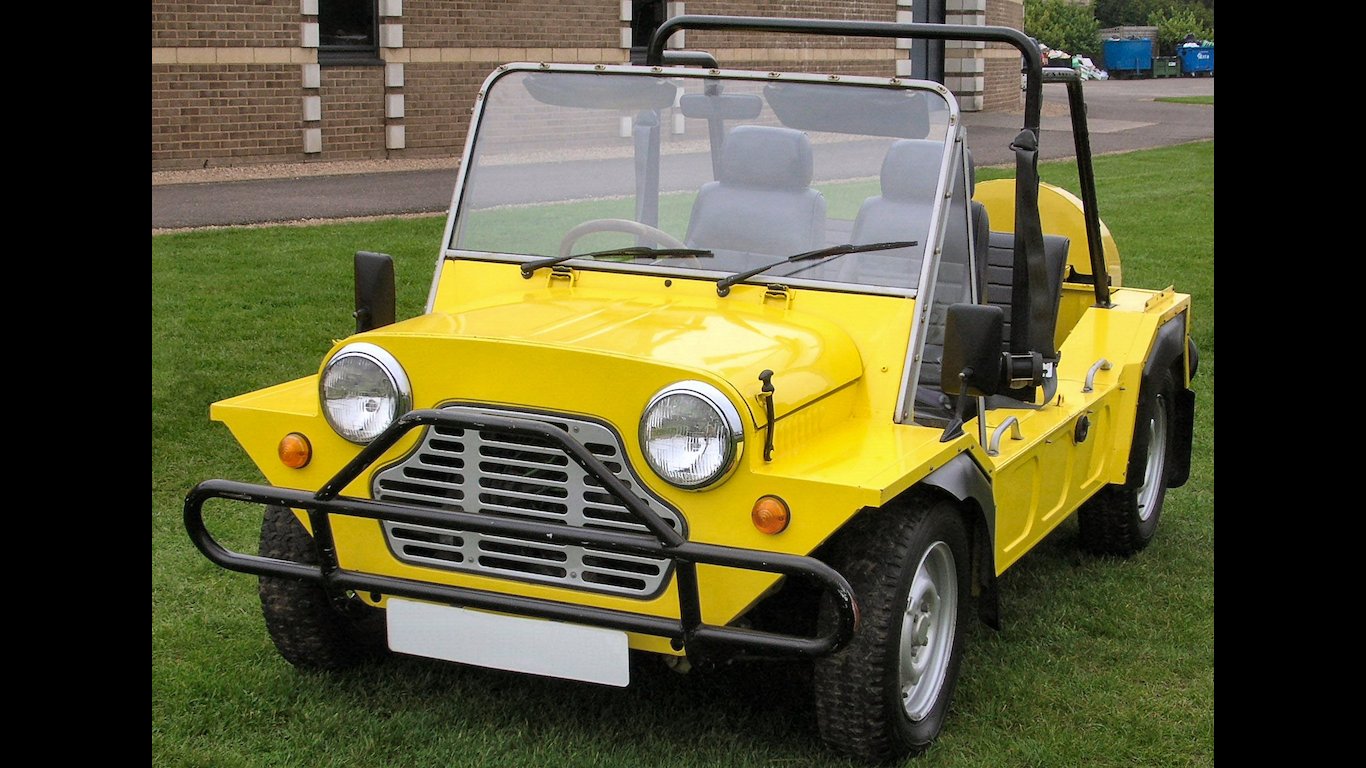
12. Mini Moke
> Year introduced: 1964
> Manufacturer: British Motor Company
The Mini Moke, built by the British Motor Company, was inspired by the Jeep, which was used by the Allies during World War II. The vehicle’s low clearance made it unsuitable to serve the military. The Mini Moke had no doors, windows on the side of the vehicle, and there was no hard top. About 50,000 Mokes were sold between 1964 and 1992. It was popular in warm climates such as the Caribbean and Hawaii and was favored by surfers. There is an electric version made by Moke America, starting in 2017, and sold only in the United States.
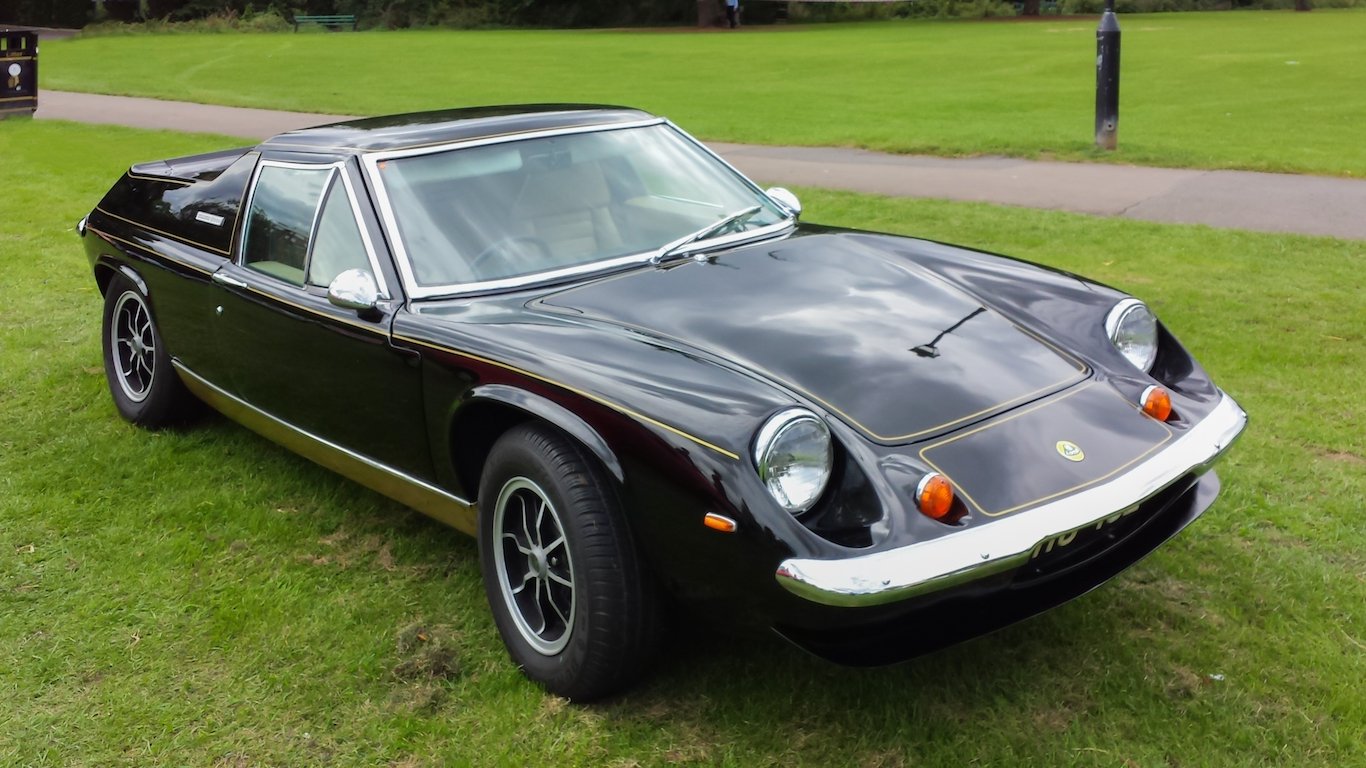
13. Lotus Europa
> Year introduced: 1966
> Manufacturer: Lotus Cars
Car buyers liked the way the Lotus Europa handled and the fact that its designers made it to cut down on drag. Lotus founder Colin Chapman’s idea was to keep the car’s weight centered; he wanted it to be small and light. The car was made of lightweight fiberglass. Buyers also appreciated that it was a lower-cost option to the Lotus Elan. However, the styling left something to be desired. Inside, the seats were fixed in one position and drivers had to raise or lower the pedals themselves. Lotus discontinued production in 1975 after selling about 9,000 cars.
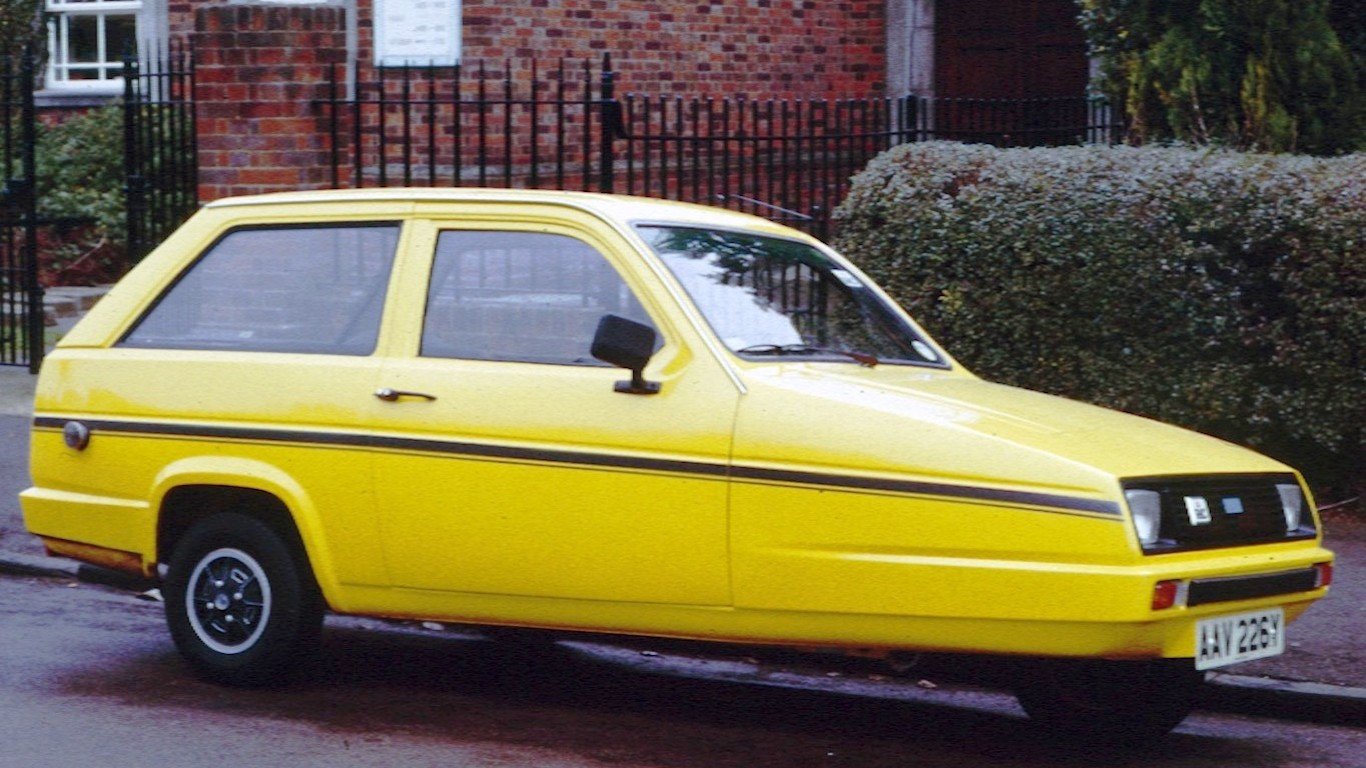
14. Reliant Robin
> Year introduced: 1973-1981, 1989-2001
> Manufacturer: Reliant Motor Company
The Reliant Robin was another British-built three-wheeled vehicle, only this car had the single wheel in front, unlike the Peel P50, another British-made car with three wheels, with the single wheel in back. The car was built this way so it could be driven on English roads with just a motorcycle license. The fiberglass Robin was introduced in 1973, and drivers quickly found out that the car tended to wobble because of the single front wheel. There were other issues as well, such as its doors cracked when the car encountered strong winds. Sometimes the steering wheel could pop off without warning. Even so, 63,000 vehicles were sold.
[in-text-ad-2]
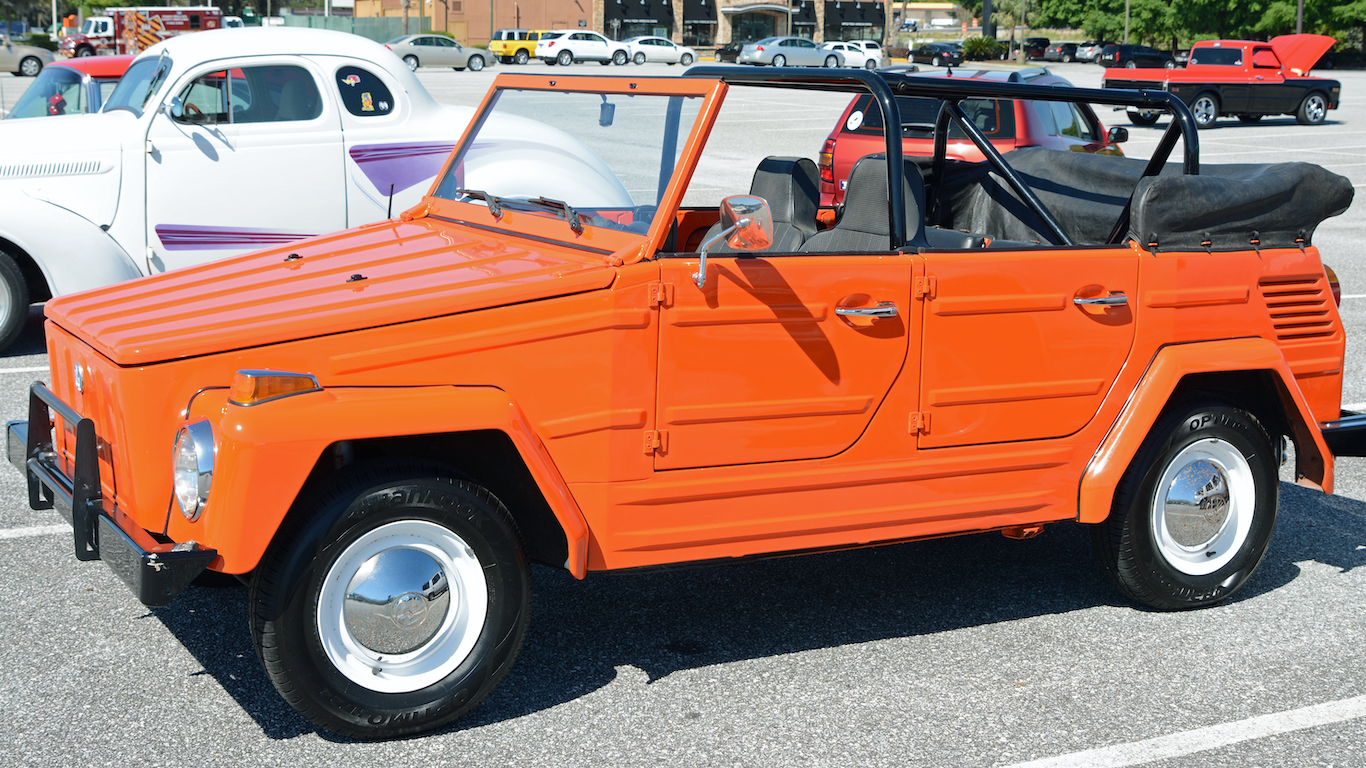
15. The Thing
> Year introduced: 1969
> Manufacturer: Volkswagen
Naming an automobile “The Thing” might not have been one of the great triumphs in marketing, yet despite that off-putting moniker, the vehicle was in production from 1969 to 1980. The Thing came about because military services in Europe were looking for a vehicle similar to the American Jeep. Volkswagen produced the vehicle that was known as the Kubelwagen. It came to America in 1973, where it was called The Thing. It was a bare-bones vehicle with not much styling. It did have good ground clearance and wide windows. There was little in the way of safety features other than seat belts.
16. Brat
> Year introduced: 1978
> Manufacturer: Subaru
Subaru wanted to jump into the pickup market in the United States, but foreign-made pickups were subject to tariffs. The Japanese company’s solution was to add several rear-facing seats on the bed of the vehicle and classify it as a passenger car. The seats weren’t comfortable or safe, but the adjustment got the car around the tariff penalty. Brat stood for “Bi-drive Recreational All-terrain Transporter.” Among its owners was President Ronald Reagan, who drove it around his ranch in California.
[in-text-ad]
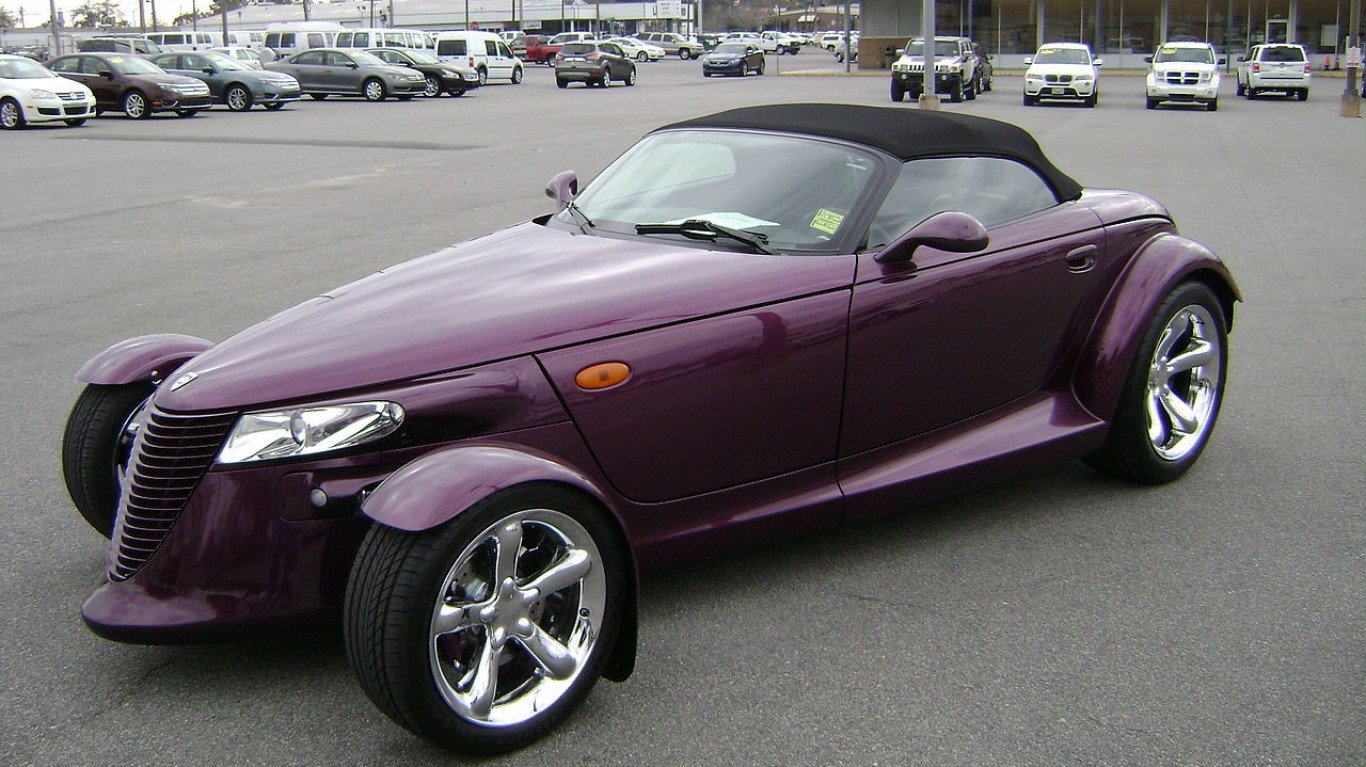
17. Prowler
> Year introduced: 1997
> Manufacturer: Plymouth
When is a hotrod not a hotrod? When it is a Prowler. The Plymouth-produced car had just 250 horsepower and its 295-millimeter-wide rear tires were considered inadequate for a hotrod. Car enthusiasts on websites like motor1.com said the Prowler “was inspired, if not plagiarized, by a retro roadster design by the famous Chip Foose. Besides the fact that it wasn’t powerful or fun to drive, they said the trunk was too small. When Plymouth went under in 1999, the model came under the Chrysler brand. The Prowler sold 11,700 units and its run ended in 2002.

18. Multipla
> Year introduced: 1999
> Manufacturer: Fiat
The Fiat Multipla is frequently listed as one of the ugliest cars ever made. The vehicle, which never made it to the United States, resembled a minivan though the lower part of the vehicle appeared to have the body of a station wagon. The high windows seemed out of proportion and two of the headlights were flush with the windshield. Its overall look was boxy.
19. Aztek
> Year introduced: 2001
> Manufacturer: General Motors
The Aztek was criticized for its odd design from its inception. It had a dual roof and a rear that looked truncated. Lights and car grilles seemed to be placed haphazardly. But you can’t keep an ugly car down. The Aztek was the car driven by the crystal meth-cooking chemistry teacher Walter White on the cable series “Breaking Bad” and has found a market among millennial car buyers.
[in-text-ad-2]

20. Twizy
> Year introduced: 2012
> Manufacturer: Renault
The Twizy is an electric two-seater that the European Union classifies as a “quadricycle.” The doors lift upward to allow access. The Twizy has a driving range of 56 miles and a top speed of 56 mph. The vehicle was the best-selling totally electric vehicle in Europe when it came out in 2012.
Essential Tips for Investing: Sponsored
A financial advisor can help you understand the advantages and disadvantages of investment properties. Finding a qualified financial advisor doesn’t have to be hard. SmartAsset’s free tool matches you with up to three financial advisors who serve your area, and you can interview your advisor matches at no cost to decide which one is right for you. If you’re ready to find an advisor who can help you achieve your financial goals, get started now.
Investing in real estate can diversify your portfolio. But expanding your horizons may add additional costs. If you’re an investor looking to minimize expenses, consider checking out online brokerages. They often offer low investment fees, helping you maximize your profit.
Thank you for reading! Have some feedback for us?
Contact the 24/7 Wall St. editorial team.

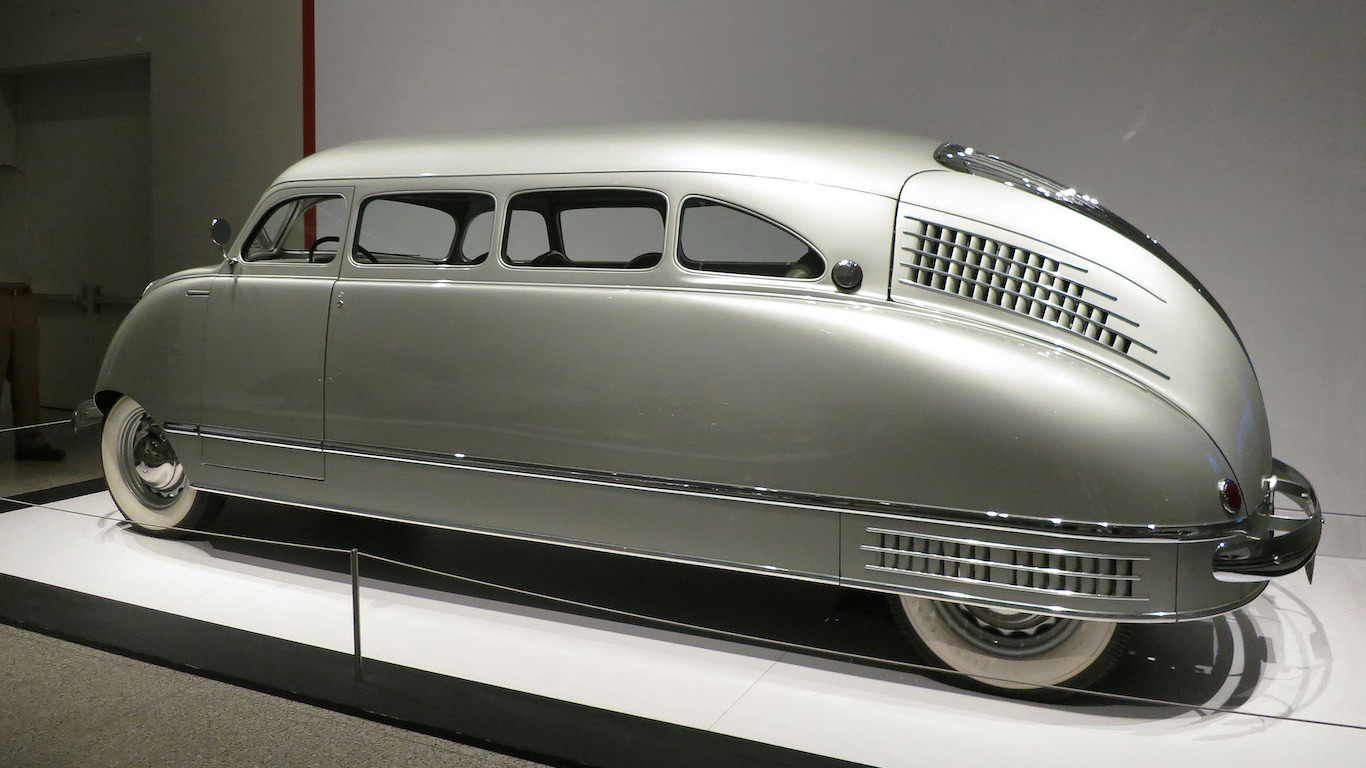 24/7 Wall St.
24/7 Wall St.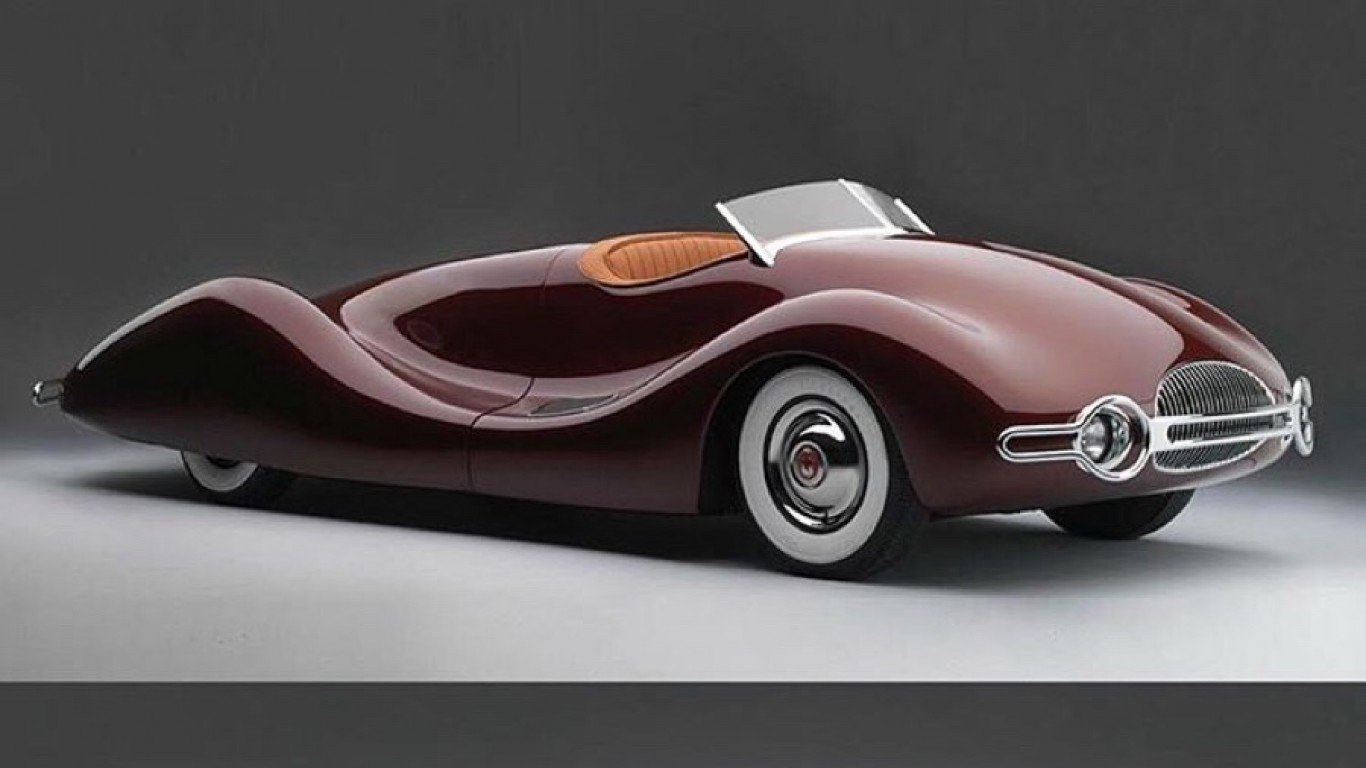
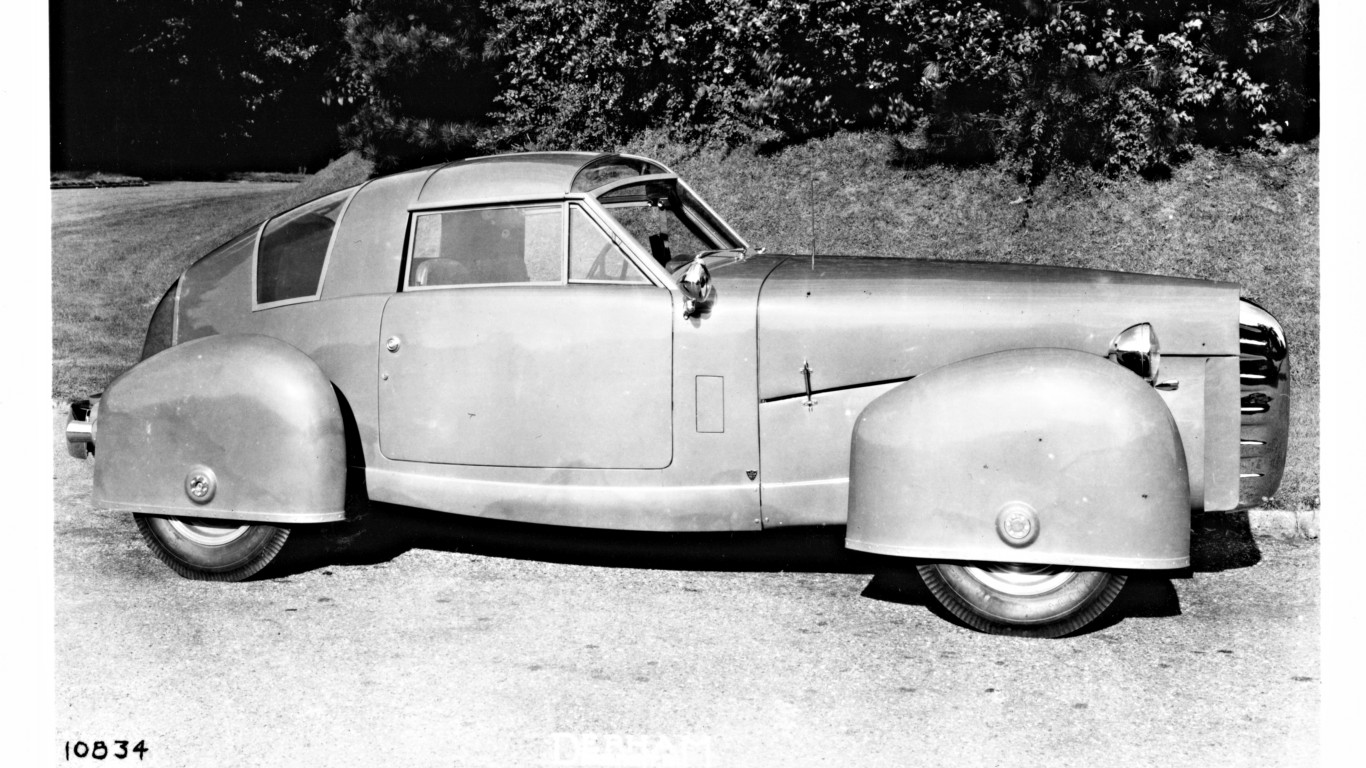
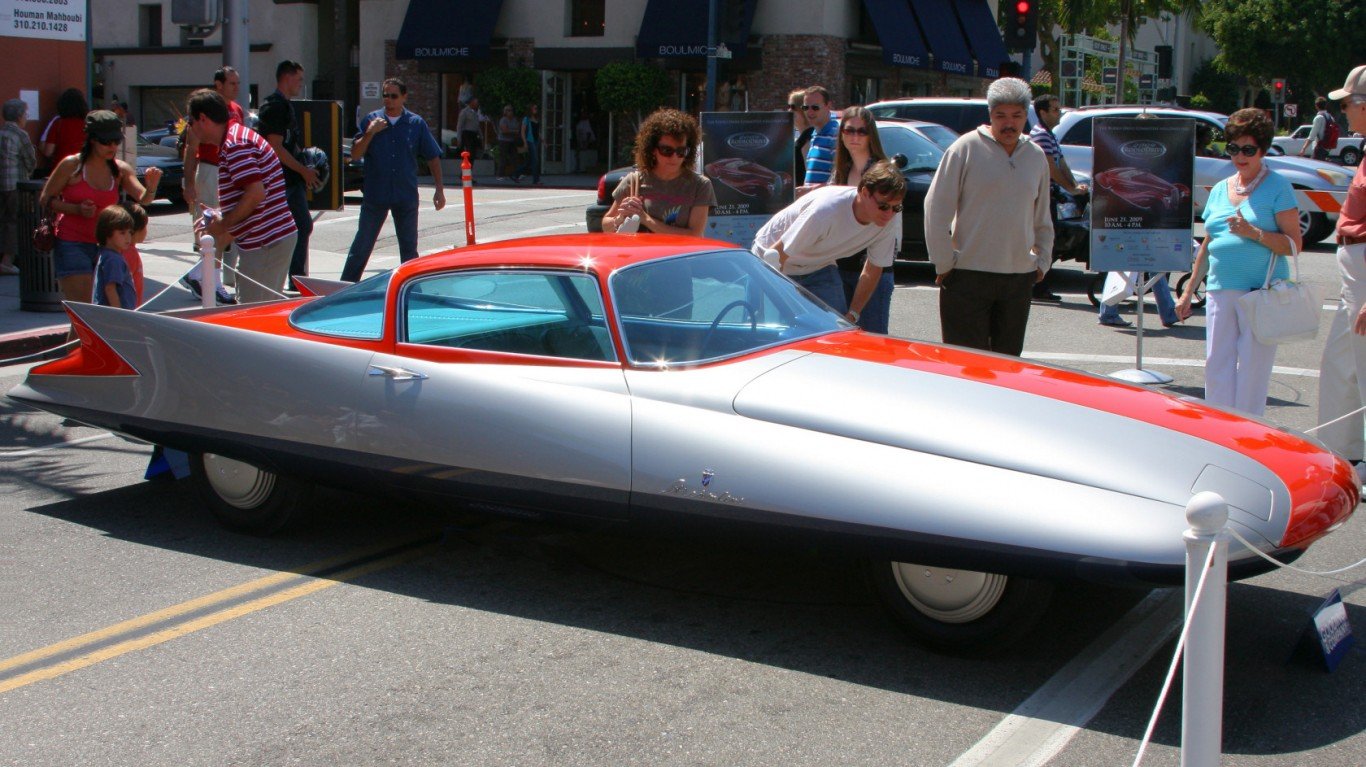
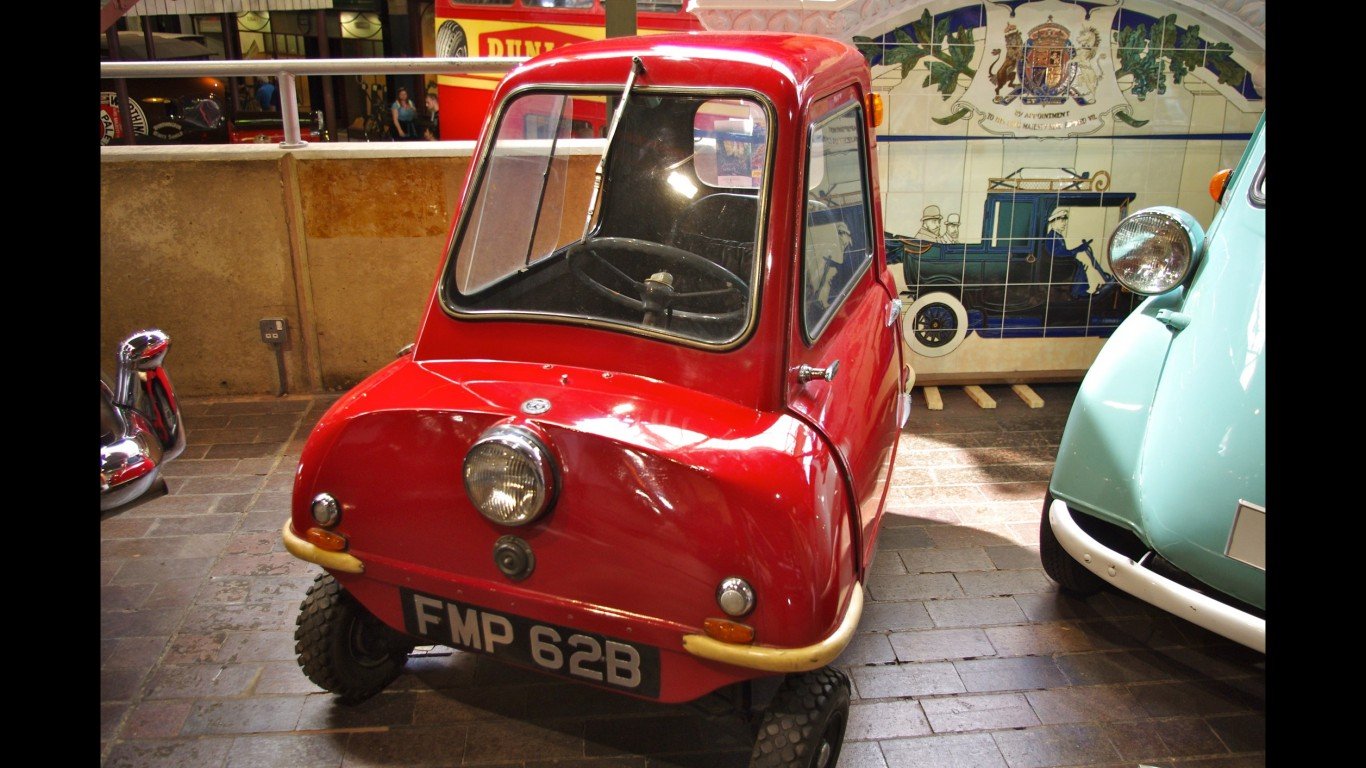
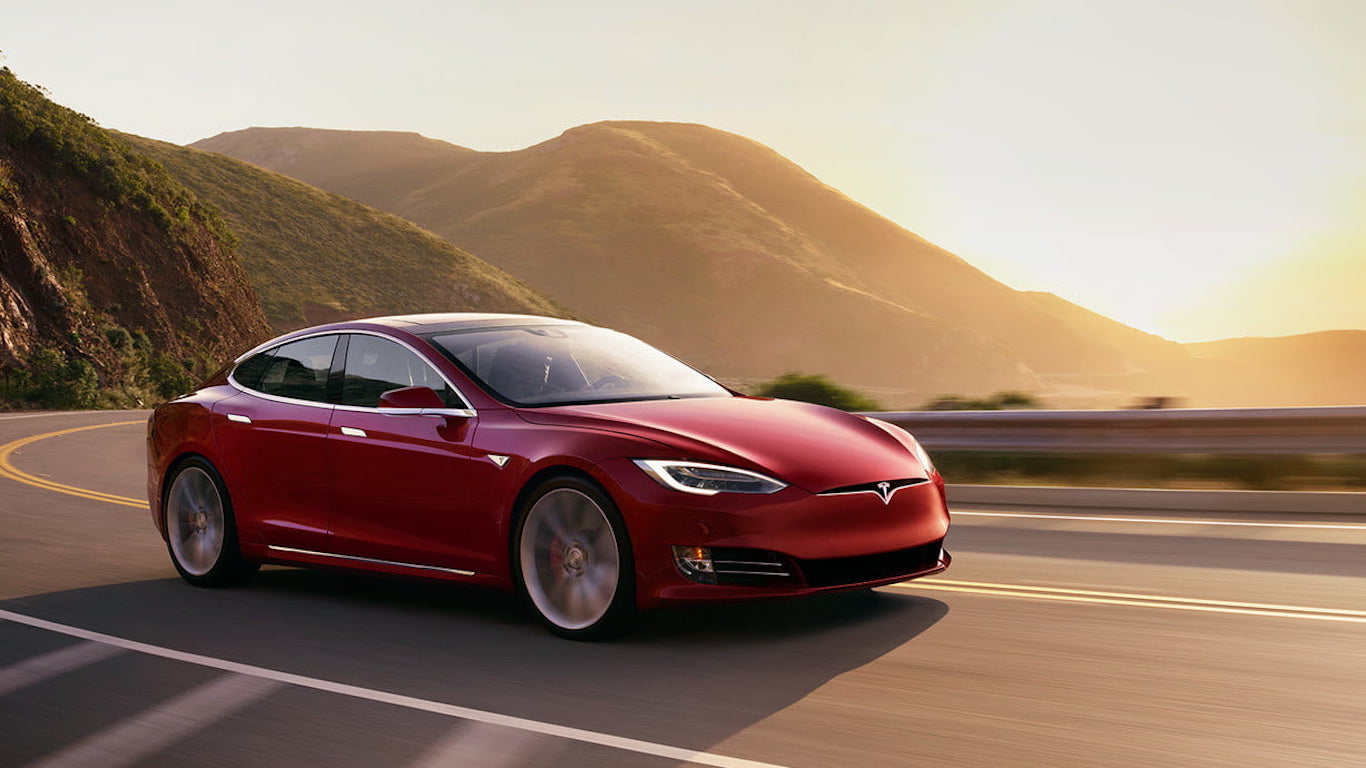 24/7 Wall St.
24/7 Wall St.